the education of henry
American History Tour
Day 26: American Revolution Museum - Yorktown, Jamestown Settlement, and Colonial Williamsburg
2023-10-09
Another beautiful day here in Virginia! We drove over to the American Revolution Museum. We've been to a lot of museums recently, and this was one of the best. The displays were clear and not overwhelming. The things on display were of high quality and nicely labeled and explained. The interactive activities were excellent, with special mention of the one that would let you find battles by date, location, outcome, and leader. And we finally saw a video better than the Minuteman video. The Siege of Yorktown video has an ultrawide screen. When the video plays there are a number of sensory effects: thunder and explosions vibrate the seats, wind blows during the naval scenes, and smoke rolls onto the floor when the soldiers are fighting at night in the mist and fog. And the lightning flashes! We all agreed it is the best video so far. Plus, there was a Continental Army encampment and a Revolutionary Era farm - both of which were staffed by people in costume.
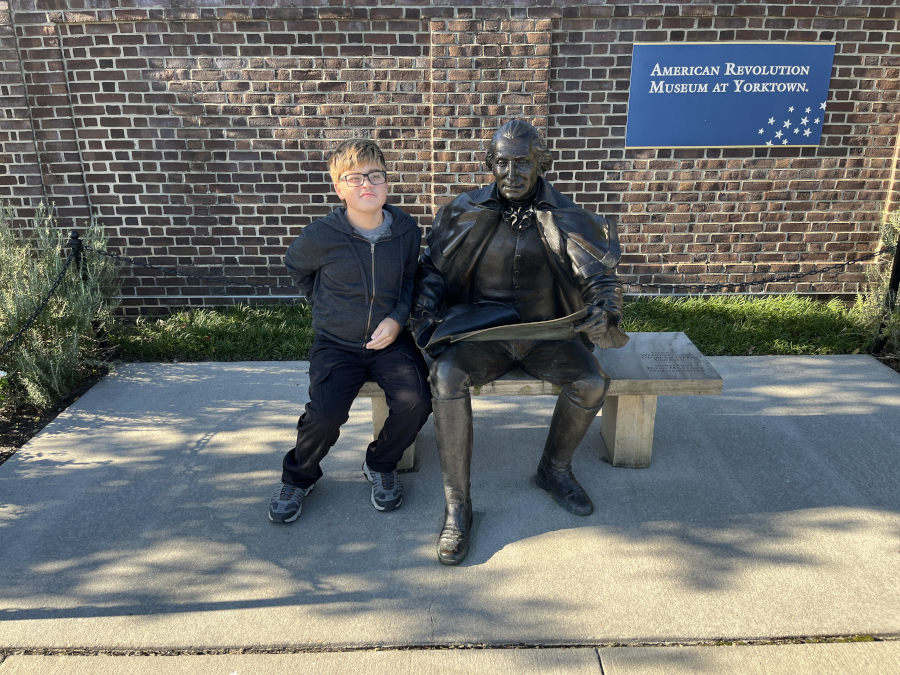
Another picture with George.

Some common types of flintlock weapons from the War for Independence.
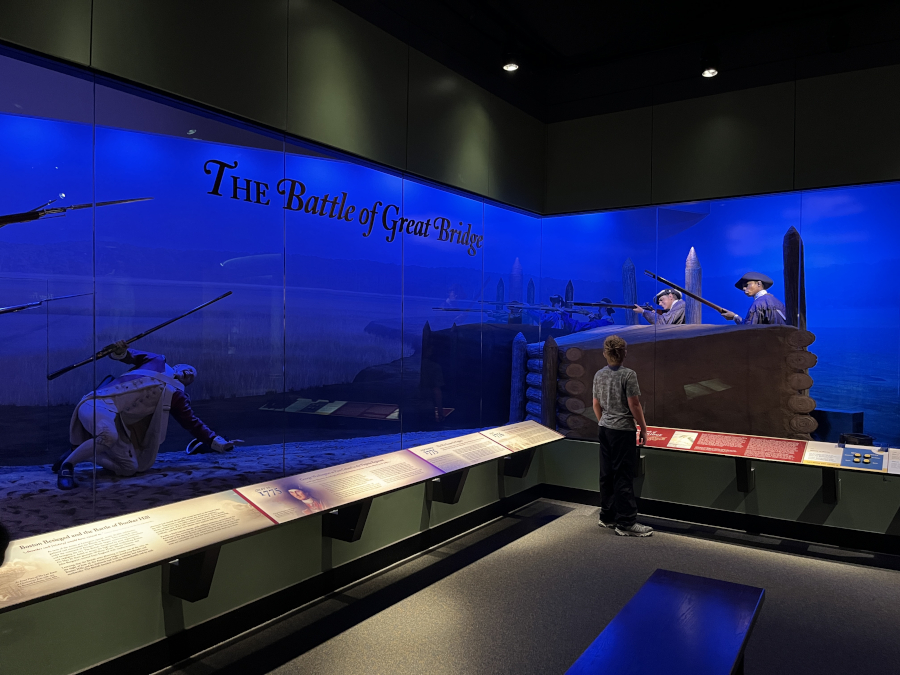
Virginia had the Battle of Great Bridge around the same time as Lexington and Concord - but the Virginians were reacting to the Colonial Governor seizing all the colony's weapons and gunpowder. In Lexington they were fighting to keep that from happening.
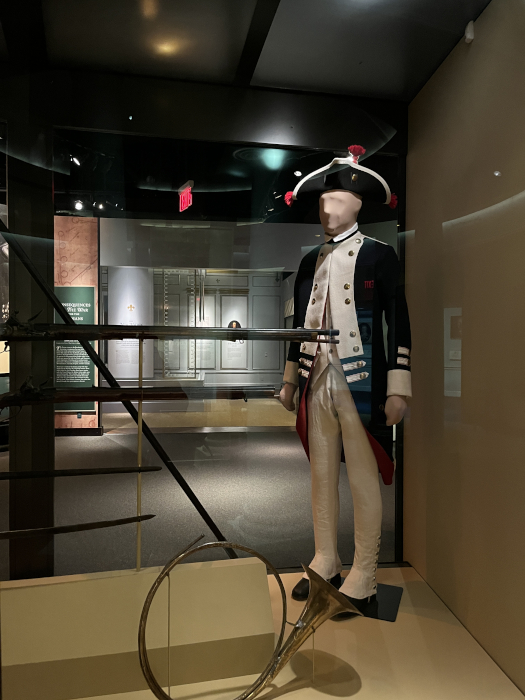
This is the uniform of a Hessian mercenary, hired by the British to fight us rebellious colonists.
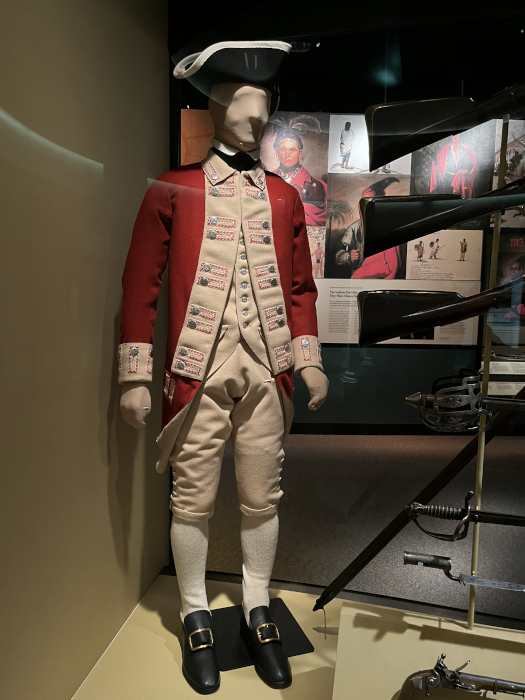
The classic red coat uniform of the British.

Our French allies would have been dressed in this uniform.

This is the official standard uniform of the Continental Army, as specified by Washington. You wouldn't be likely to see them all dressed this way, however, since lack of funding for the Continental Army often meant soldiers fought in their own clothes, or uniforms they had made themselves.

Reading the Declaration.
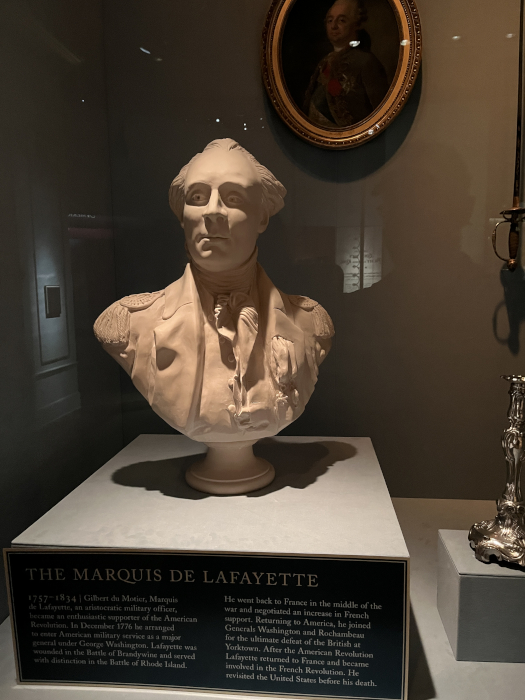
A bust of Lafayette.

This cannon fires a 24 pound ball!
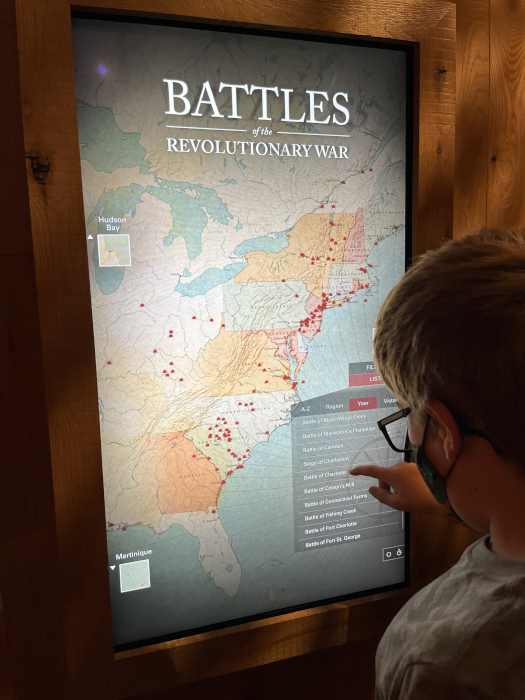
One of the best interactive displays we have seen. There was one like this at Gettysburg for that battle.
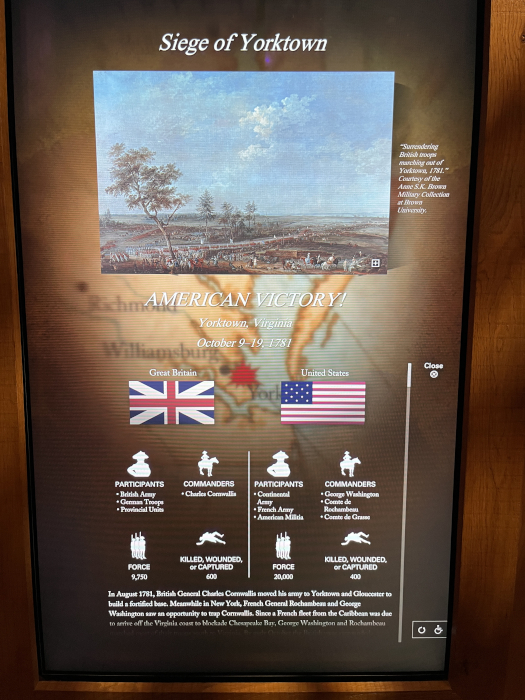
All the stats for every battle.

There's George again.
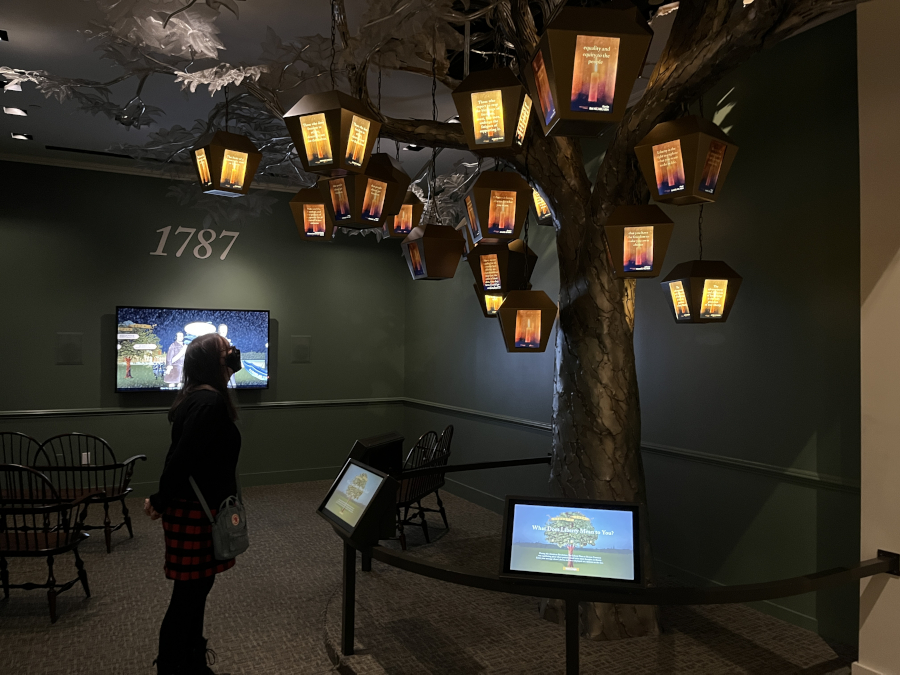
Mom checking out the interactive display. If you used the screen to write about what Freedom means to you, that text would appear on one of the lanterns in the tree.
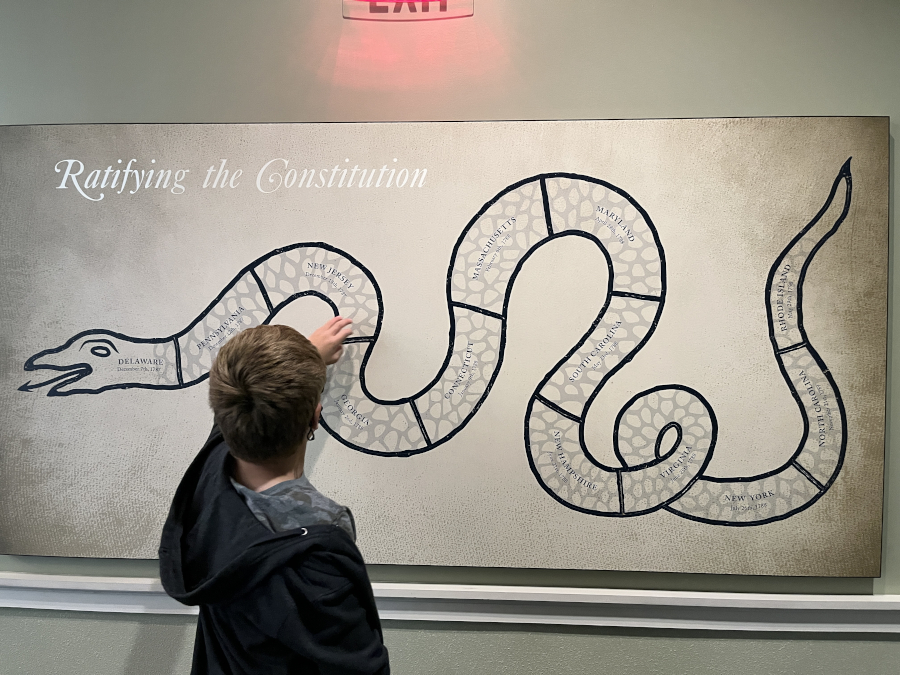
A cool variation on Franklin's "Join or die" cartoon showing the order in which states ratified the Constitution.
We also watched that awesome video on the Siege of Yorktown I mentioned earlier, and we also watched another with several stort stories taken from participants in the War for Independence.
Then we went outside to the Continental Army encampment and the Virgina tidewater farm exhibits.
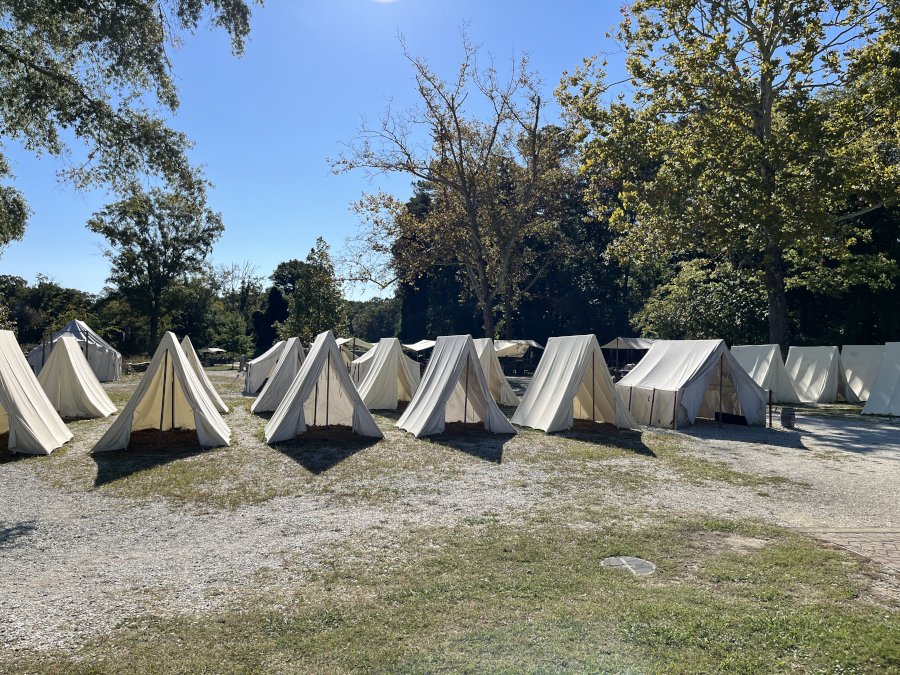
These tents are set up just as they would have been when the Continental Army was camped at Yorktown. The space in the tent isn't much bigger than a king bed - and six enlisted men shared a tent.

The soldier is explaining that this is the tent where the record keeping for the company would take place.
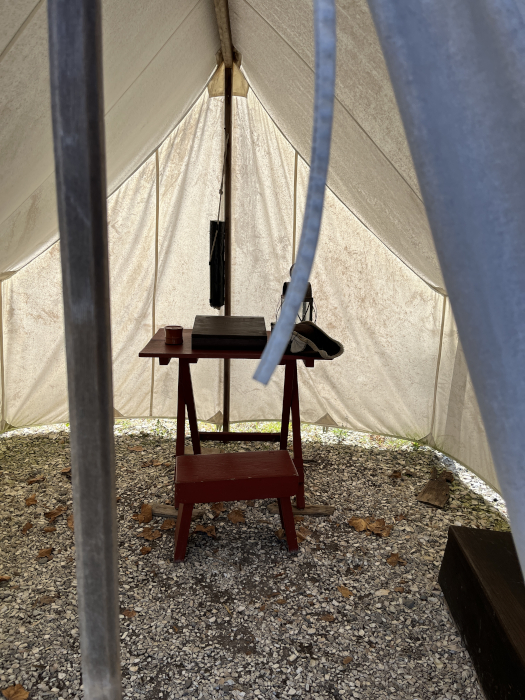
Here's the inside.

This is an officer's tent. Very spacious.
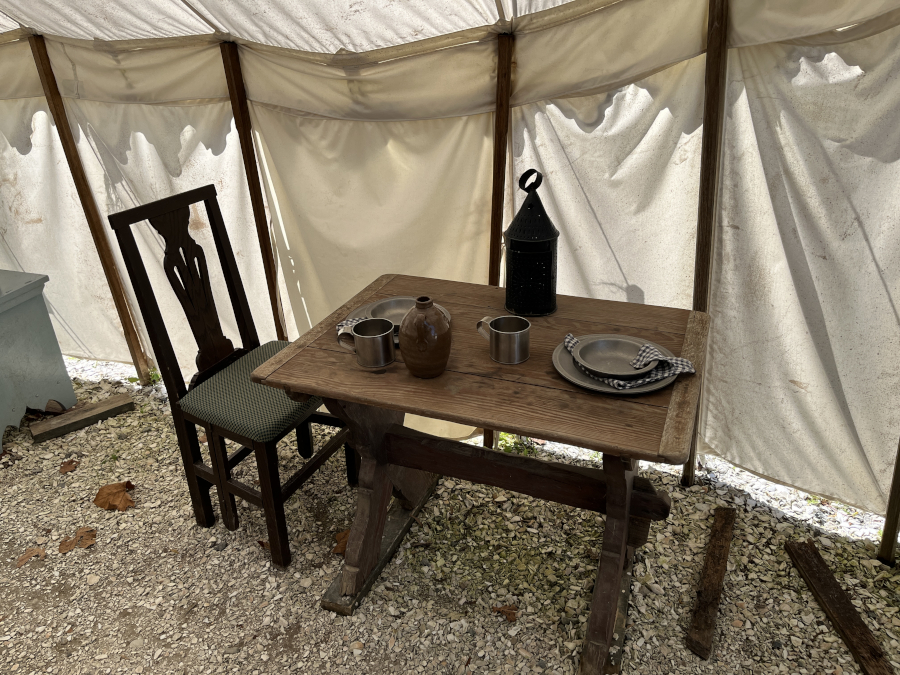
Room for a table for eating.
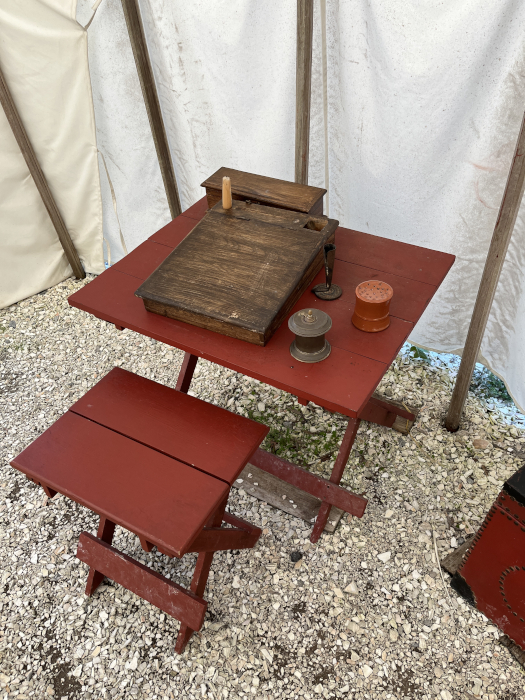
And a table for writing.
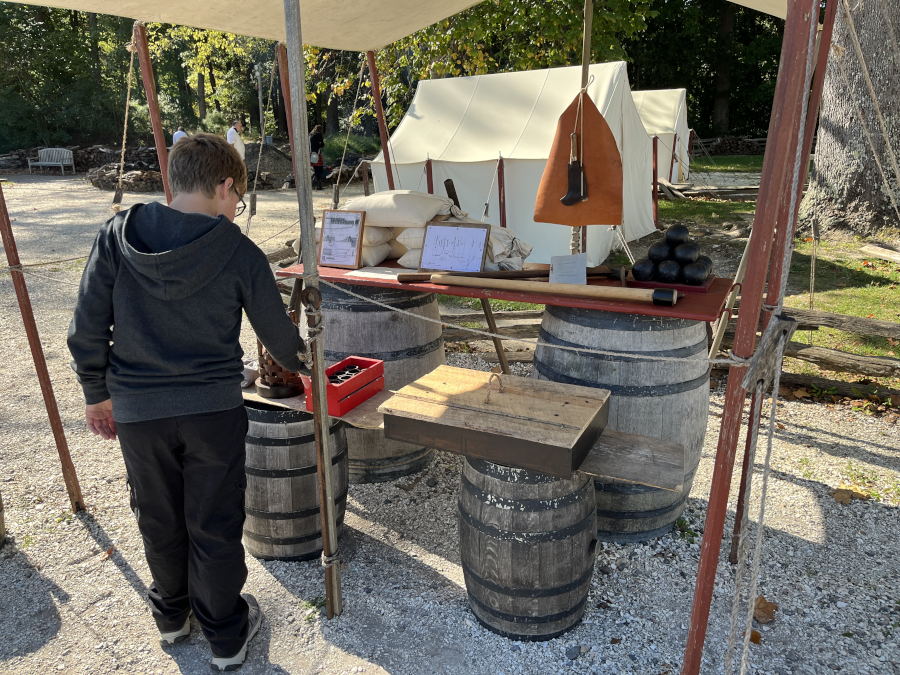
This was a quartermaster's tent.
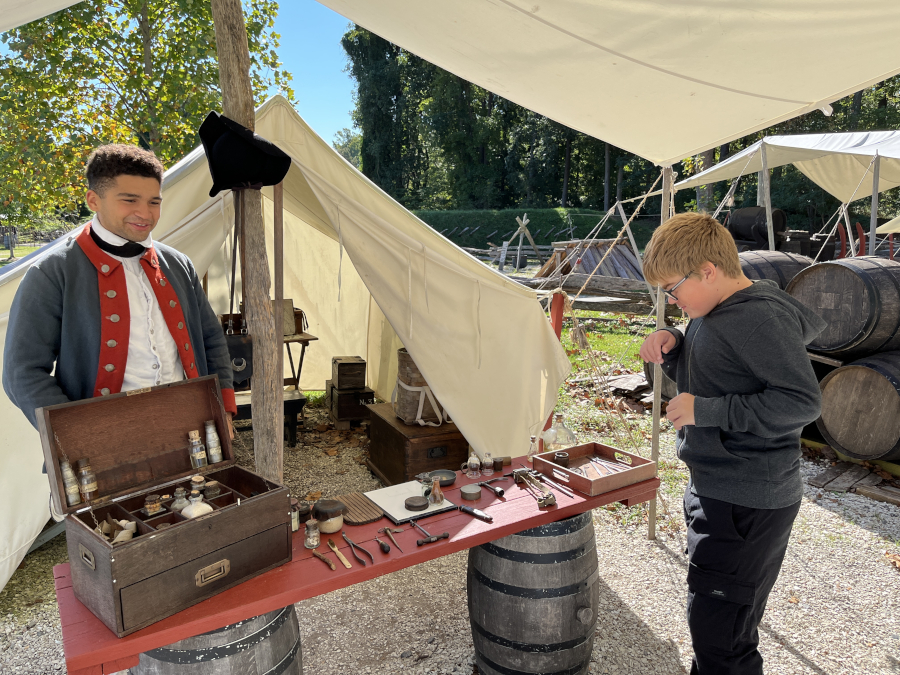
This is the surgeon. He was showing some of the devices they use to pull teeth, stop bleeding, pull veins, and remove musket balls.

Mom was asking about the some of the tools as well.
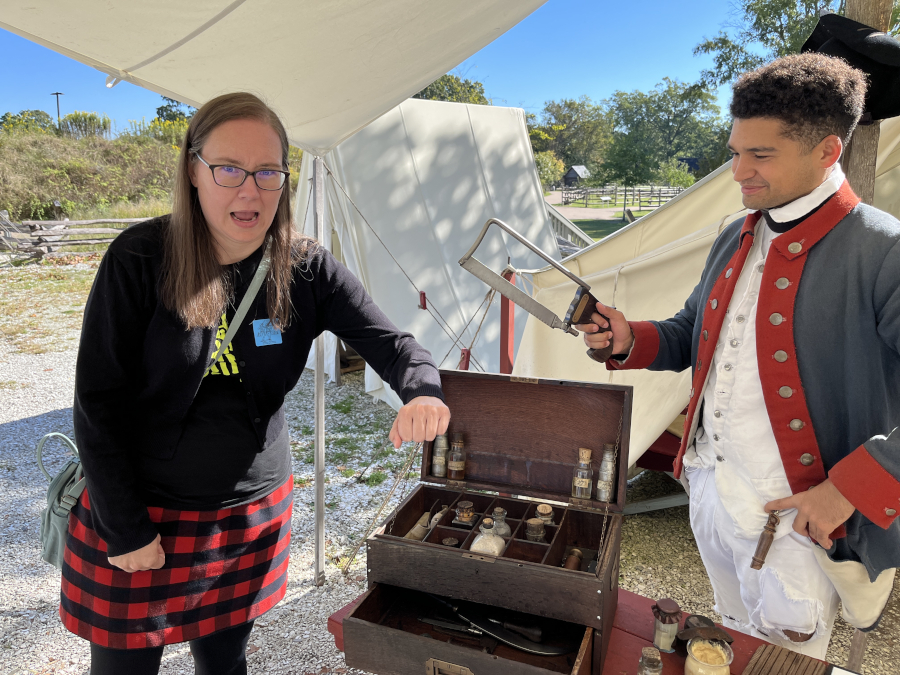
We asked about how common amputations were, and the surgeon said they were not common. During the War for Inpendence, the musket balls were a soft lead that would typically be fired from a great enough distance that bones would not shatter. If anything, the ball would hit a bone and deform, and they would have trouble extracting it. In the Civil War, the projectiles would shatter bone, and that was why there were so many amputations.

Mom said Dad could do the laundry if this is how it is done.
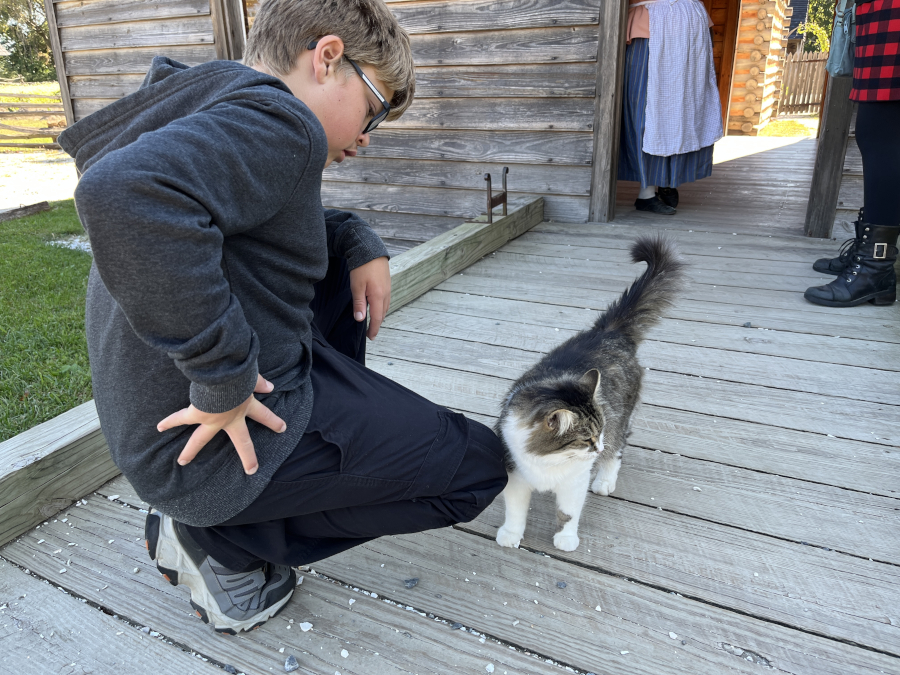
The farm had a cat - his name is Rochambeau, after the French general who fought with Washington at Yorktown.

They were growing cotton on the farm, which none of us had ever seen before - that was cool.

They also had a drying shed for tobacco, which was also neat to see.
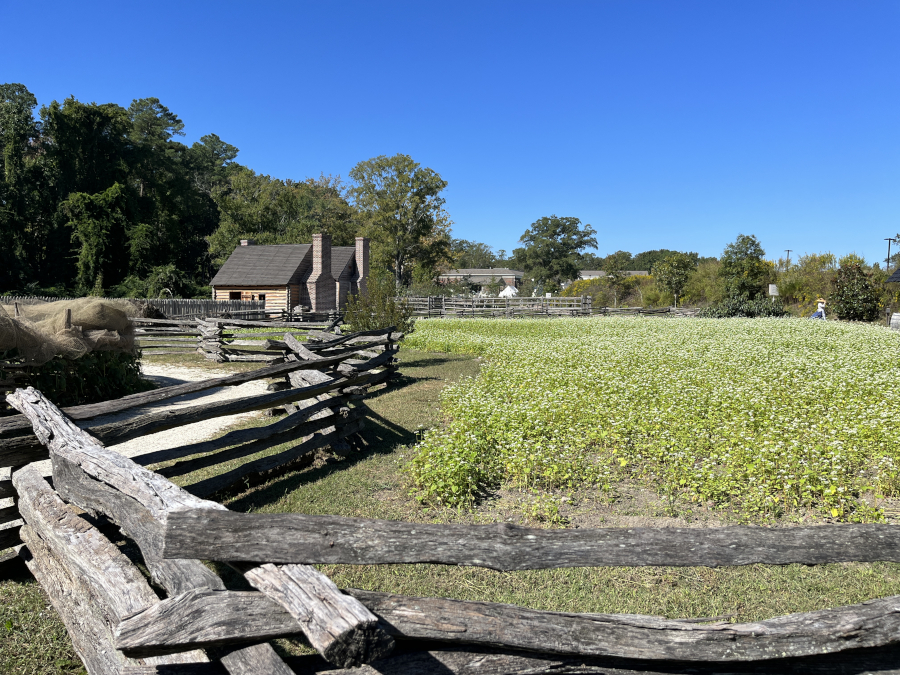
A view of some of the farm. The two buildings on the left are the kitchen in front, and the house behind it. It's Virginia - you don't want the kitchen in your house if you can afford to have it separate.

The kitchen.
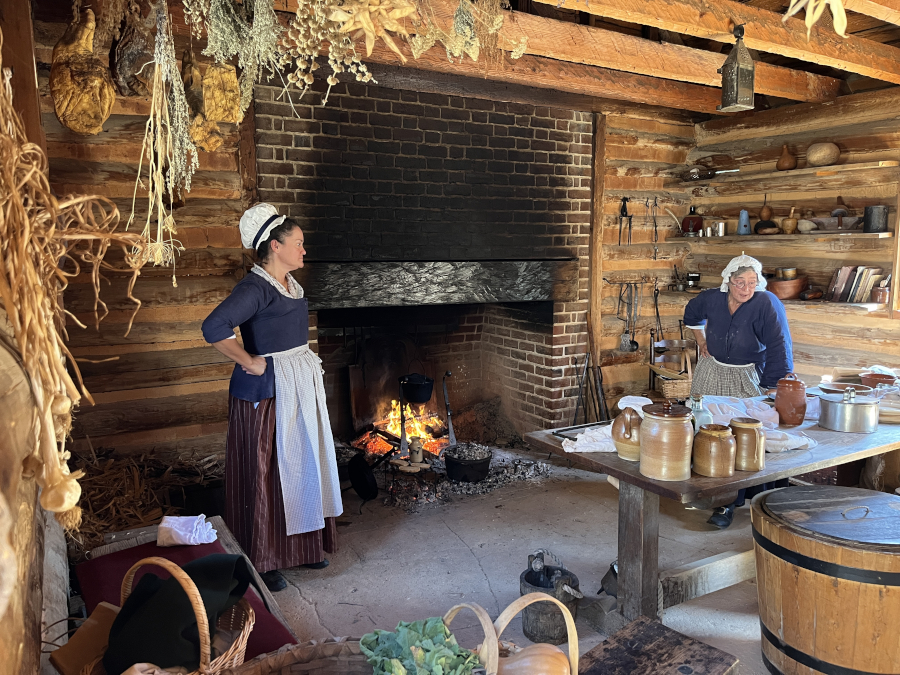
Inside the kitchen, where they were cooking a variety of things grown on the farm. They had a large garden.
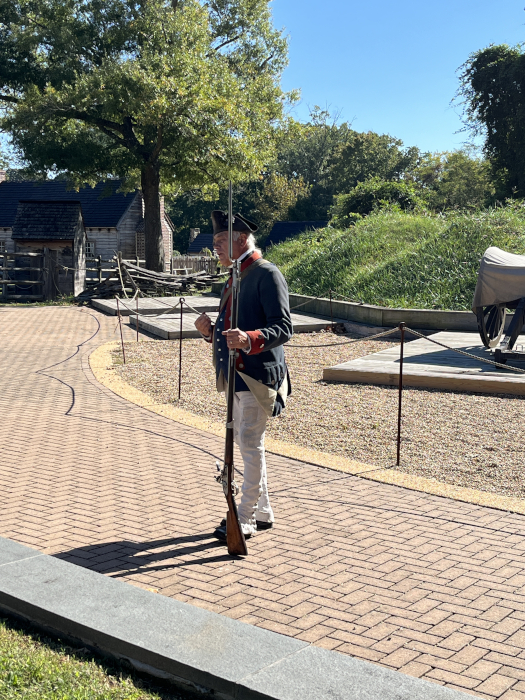
Can't miss the musket firing demonstration.

The soldier was a little too far away when he fired for a good video, but we went up to ask questions after, and we got to hold the musket.
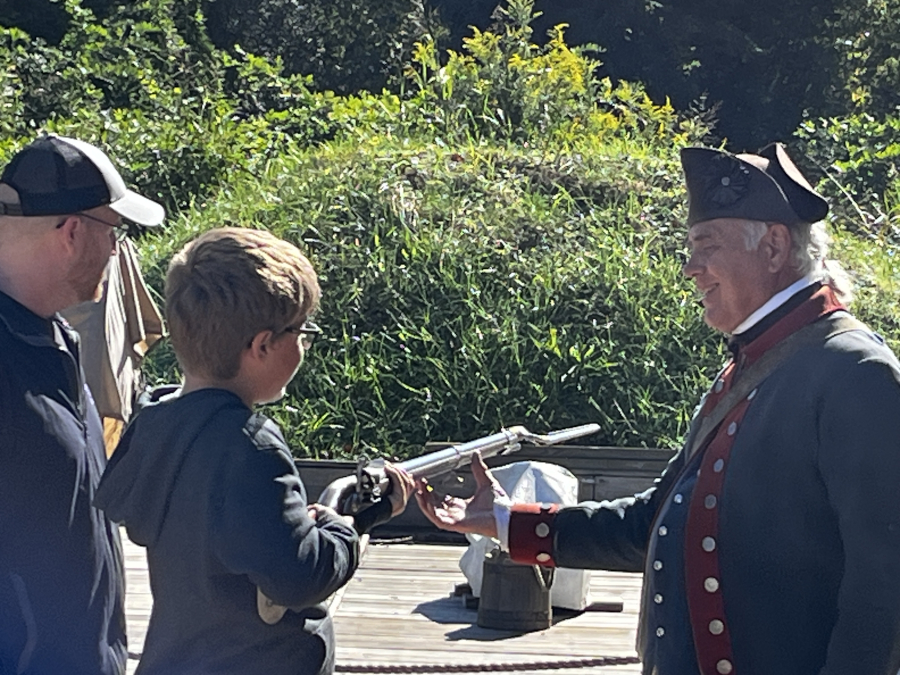
It's pretty heavy. I think this one was 14 pounds.
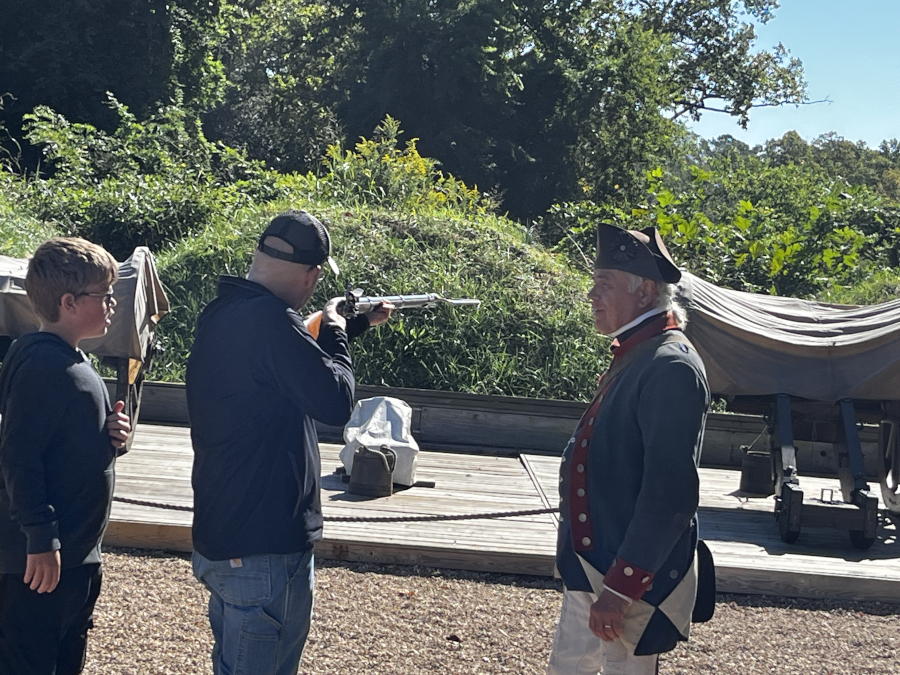
Dad tried it, too.
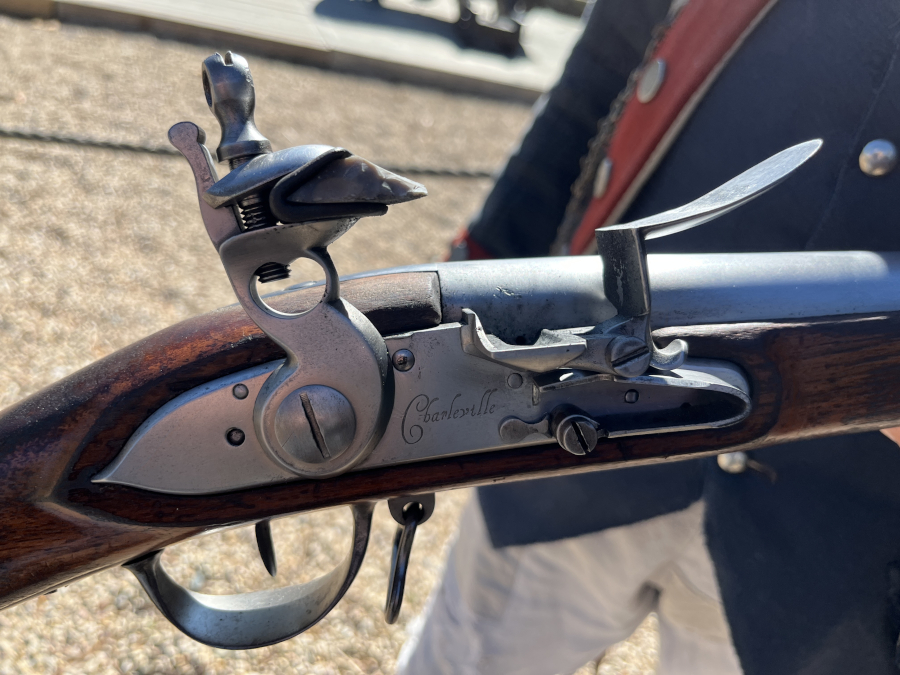
Here's a close up of the firing mechanism. Later we have a picture of a matchlock firing mechanism from the Jamestown Settlement (that would be the earlier technology).
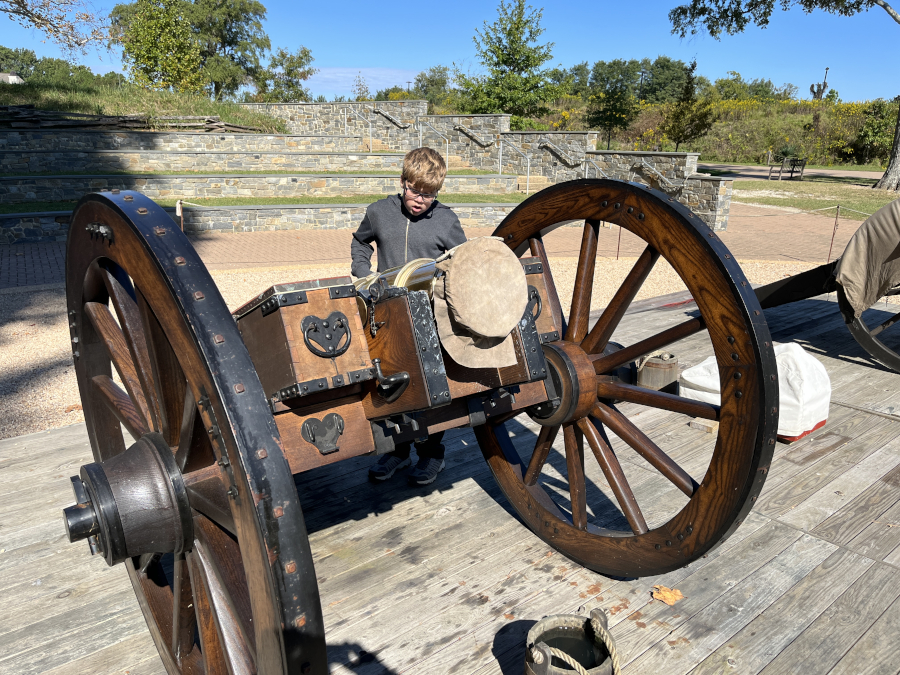
The man portraying the soldier was nice enough to uncover the Howitzer so we could see it.
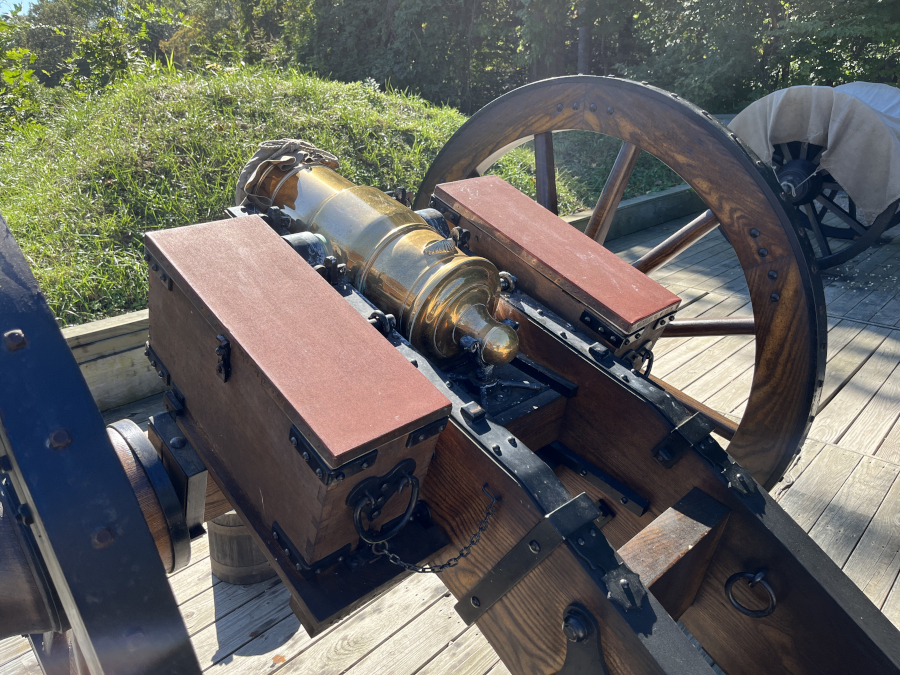
They actually fire this, but not today. Still, it was fun to see artillery that is in really good condition. The Howitzer is very shiny, and the carriage is in very good shape, freshly stained.

Some of the shot that could be used with the artillery they have here. I picked up the 24-pound ball - that was heavy!
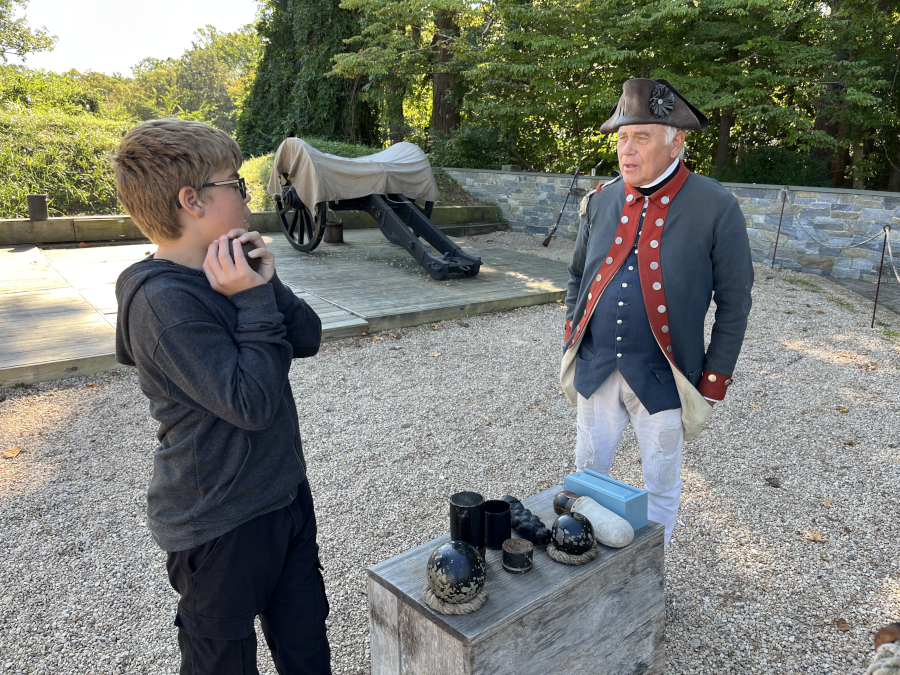
I'm holding a six-pound ball here, which was a little bigger than a baseball.
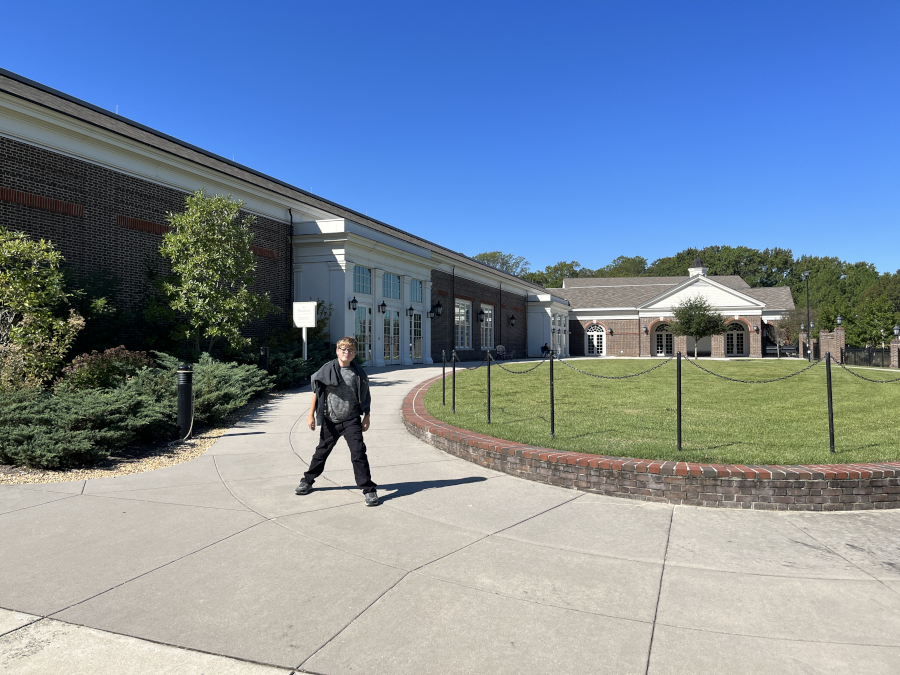
Here's what the outside of the museum looks like.

We spent a little money in the gift shop. I got this cool hat and some flintlock pistols.
We had a little picnic at the museum and then we drove back over to Jamestown Settlement to get some of the pictures we missed yesterday.

We just missed this guy giving the matchlock demonstration, but we stayed to ask him questions until the next demonstration started.
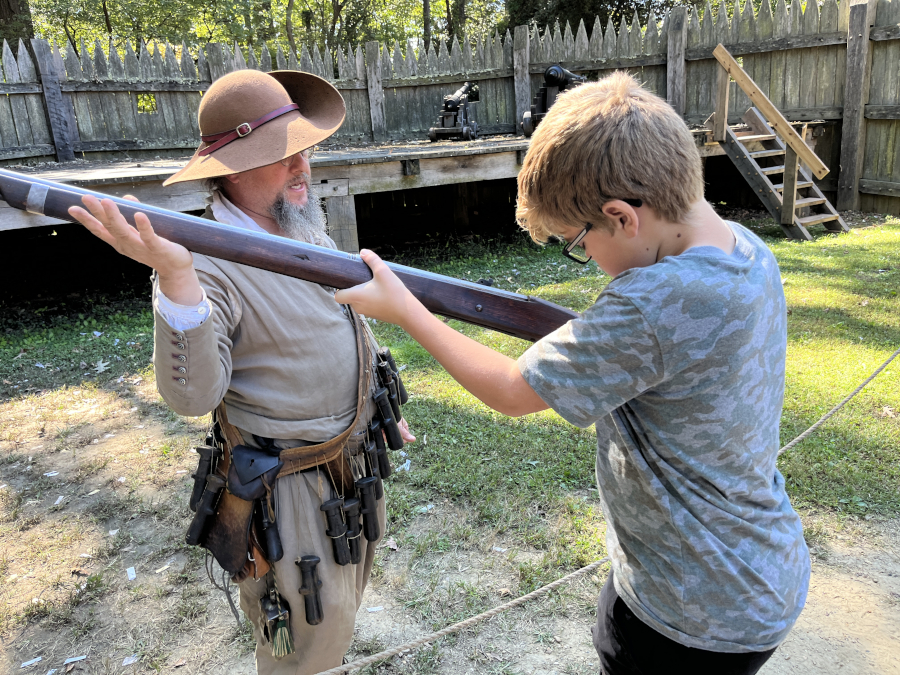
I got to hold this one, too.
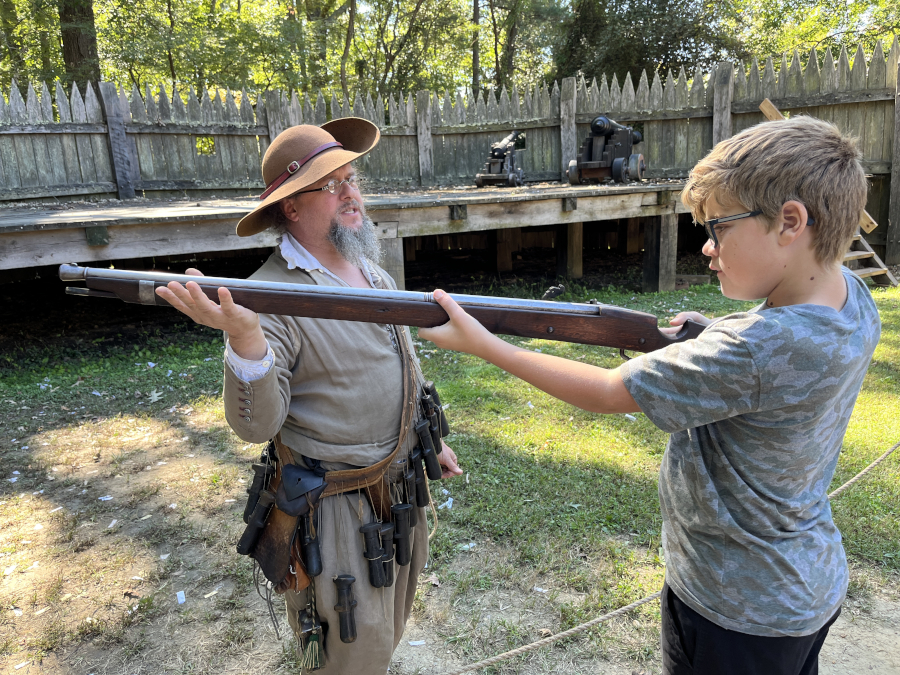
Dad got to hold it, too. But I didn't take a picture of him.
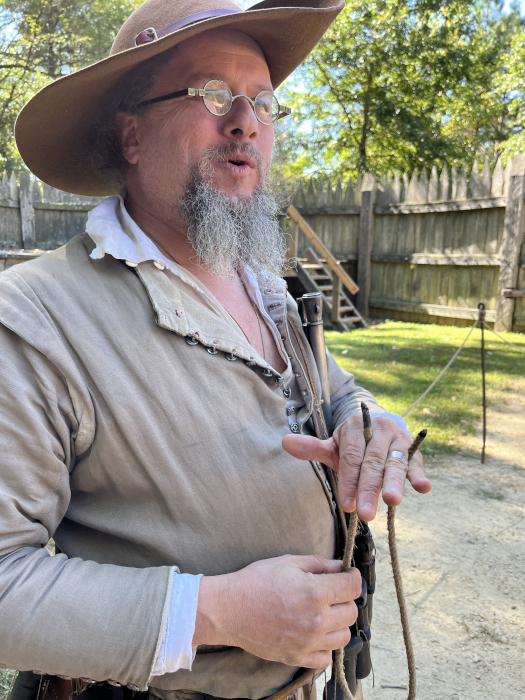
The cord between his fingers is the match - it's a hemp cord soaked in a lye solution that makes it stay smoldering. Soldiers would carry it lit on both ends. You'll see in the video below how it works. The matchlock was more reliable than the flintlock, but it was expensive to keep the match burning, as they went through a foot an hour.
The full matchlock gun demonstration - about five minutes long.
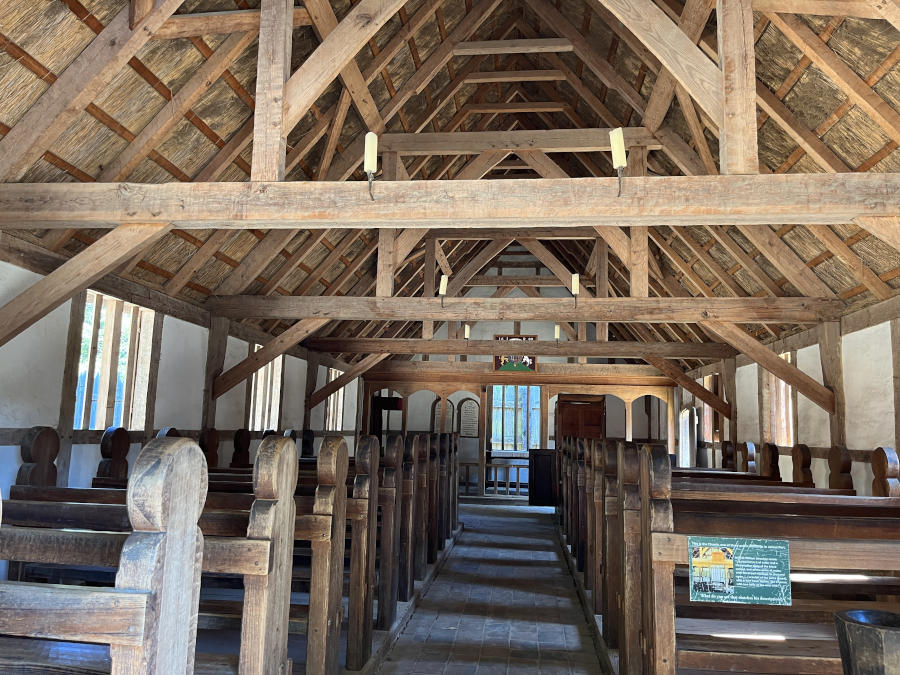
Before we left the fort we looked in on the reconstruction of the church that was at the Historic Jamestowne site.

We went back to the native village. This circle is a recreation of one that was found nearby, but no one is certain what specifically it was used for, other than it was for dances.

This is Roger, the nice man we spoke to yesterday for over an hour.
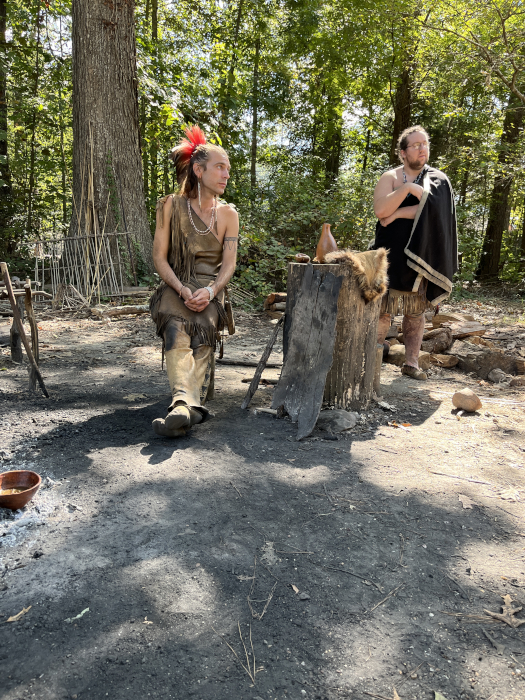
They were doing a cooking and medicine demonstration.
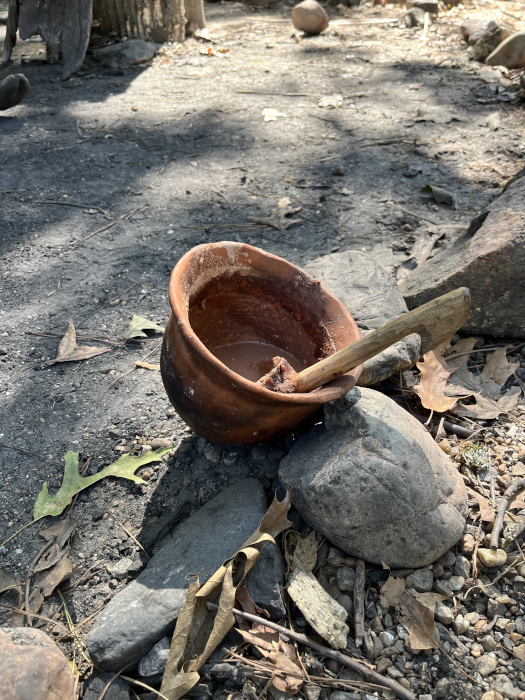
They made a kind of milk from hickory nuts. We didn't try it, but they said it's sweeter than almond milk, but less sweet than chocolate milk - but about the same consistency.

Me and Roger.

One of the houses.

We talked to this guy for a while as well, mostly about how the natives in the area would conduct war, govern themselves, and punish wrongdoers. Dad and I were both surprised that they often used capital punishment

Inside the house.
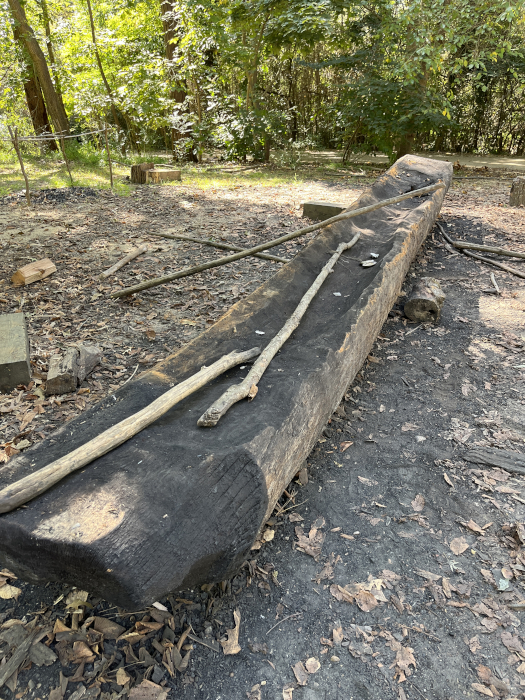
The natives here make canoes like the Wampanoag up in Massachussetts.

The Discovery. I wanted to go on, but it was closed today. Not enough workers to keep it open.
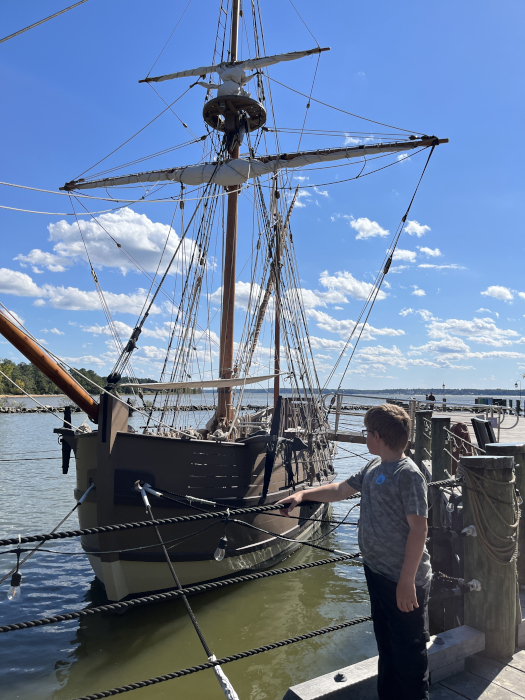

We went on the Susan Constant instead.
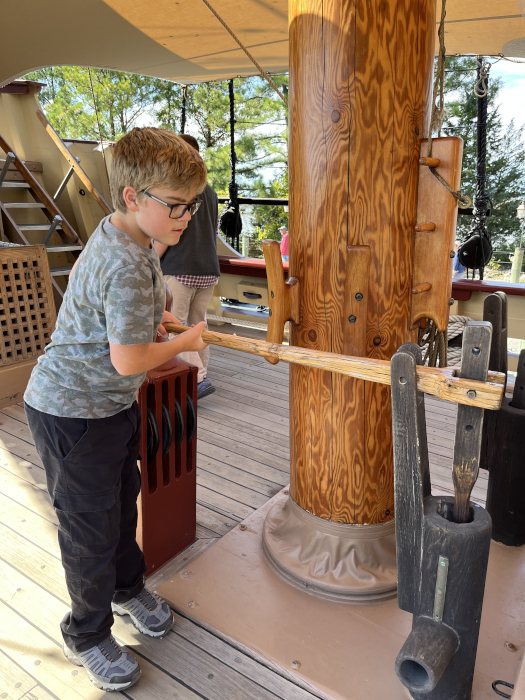
Working the bilge pump.
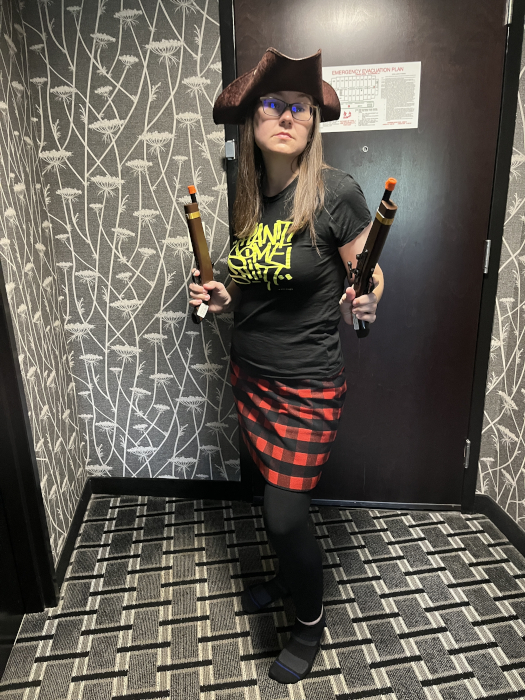
Mom in my hat, playing with my guns.
We went back to the hotel for a bit to rest. We were all tired and hungry, and we were going back out at night for a tour of Haunted Williamsburg.
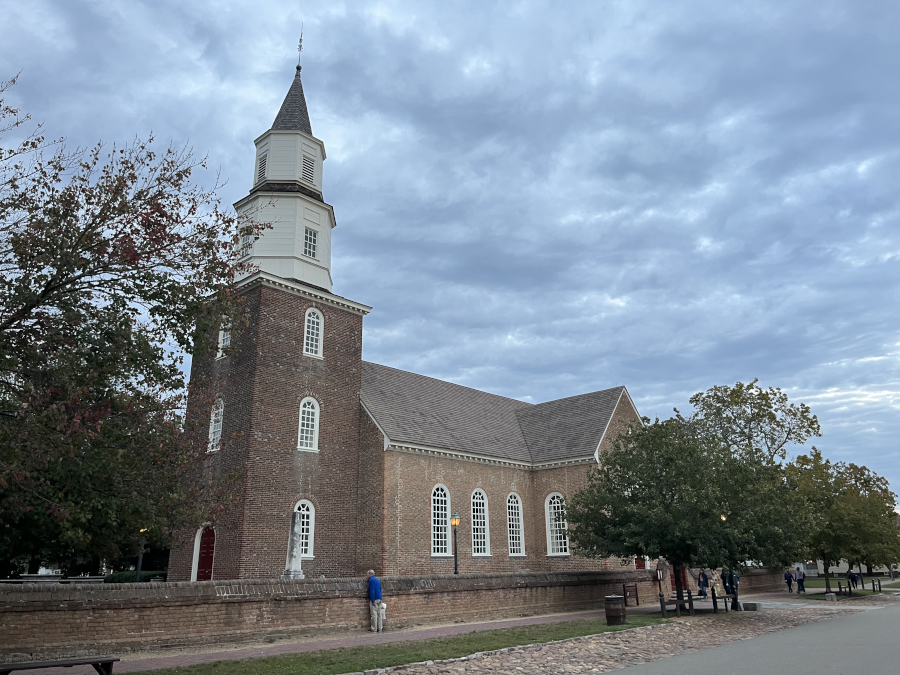
The Bruton Parish church.

The magazine and guardhouse. About the same time as Lexington and Concord, the royal governor of Virginia confiscated the arms and powder that were in this magazine, causing the citizens of Virginia to react similarly to their fellow colonists in Massachussetts.
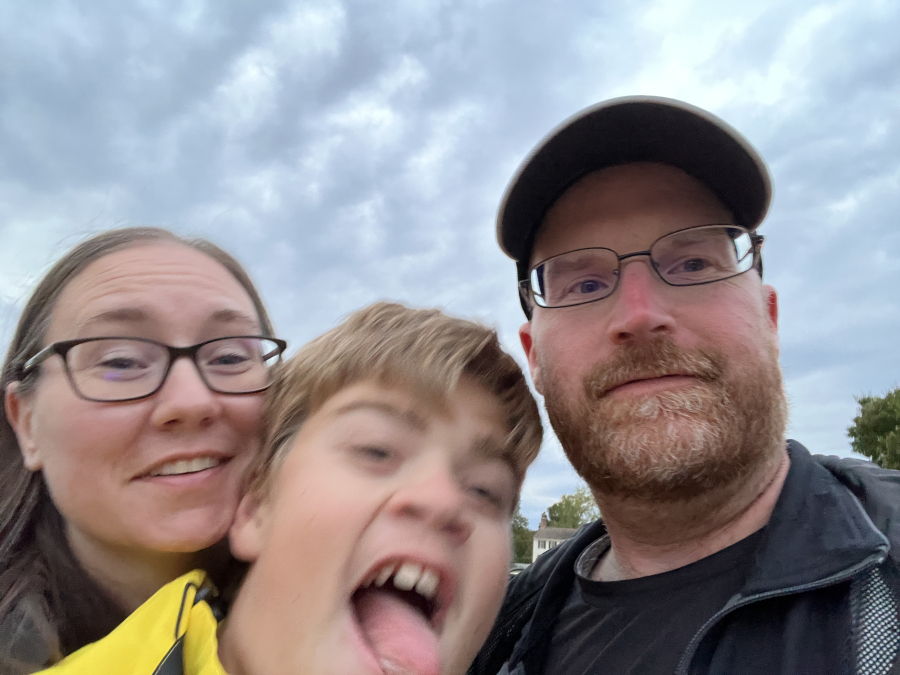
We are not very good at selfies.
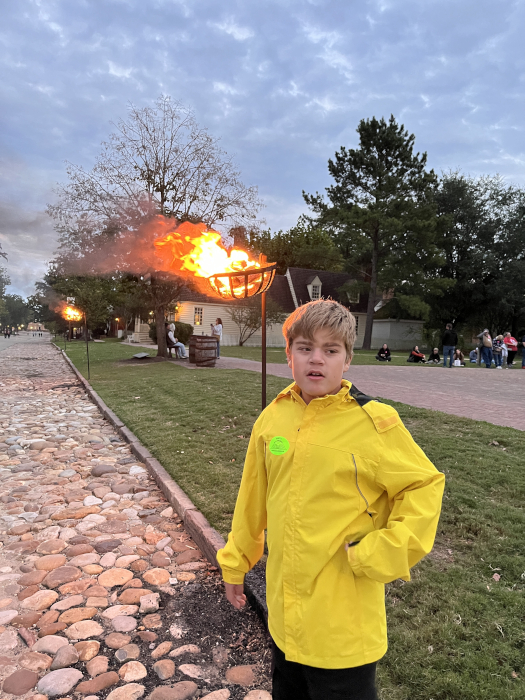
It's getting dark....
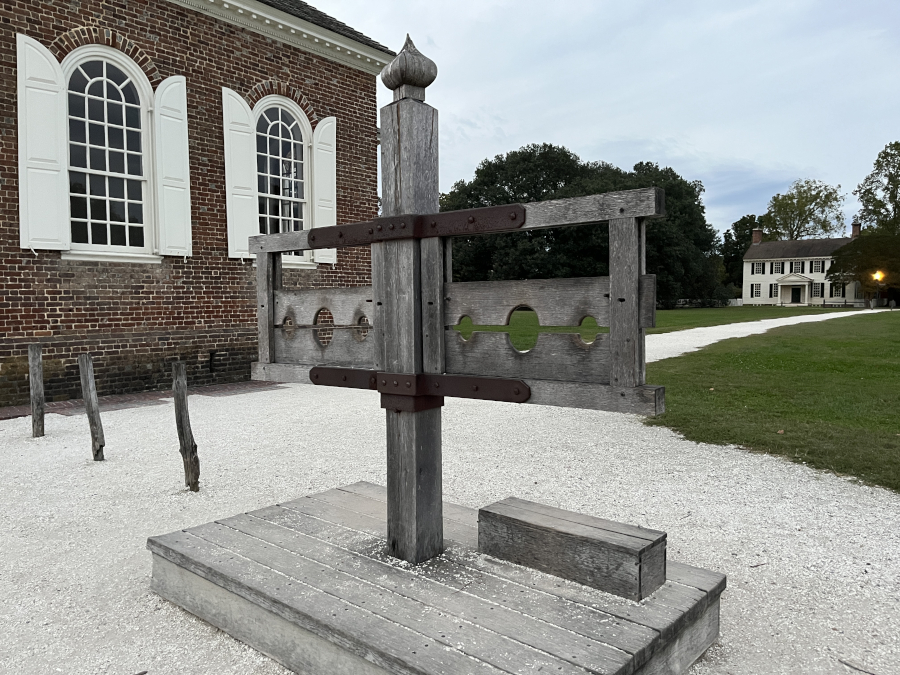
The stocks.

Guessing these are for the feet?
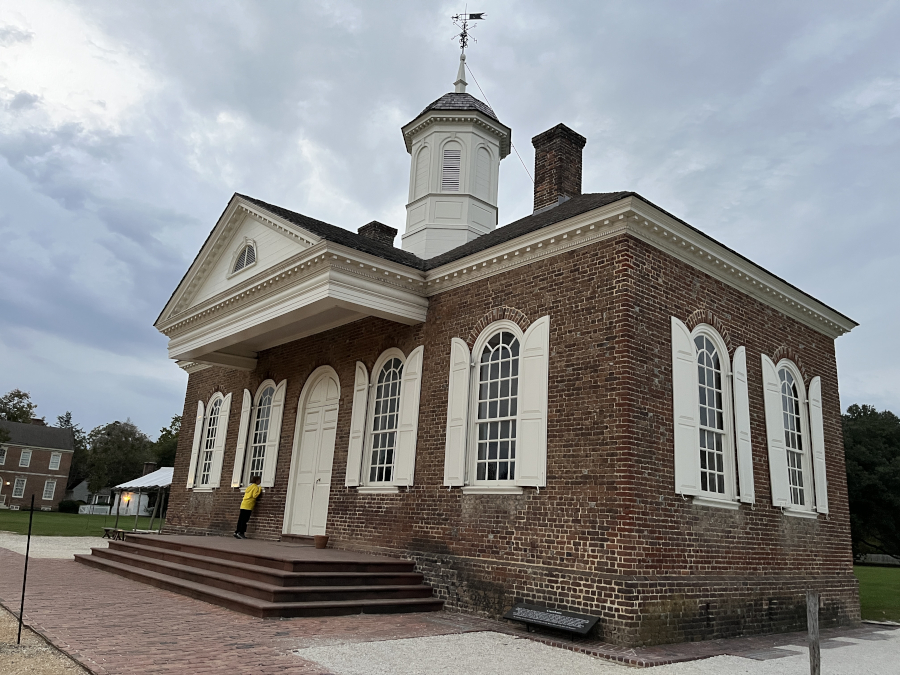
The courthouse.
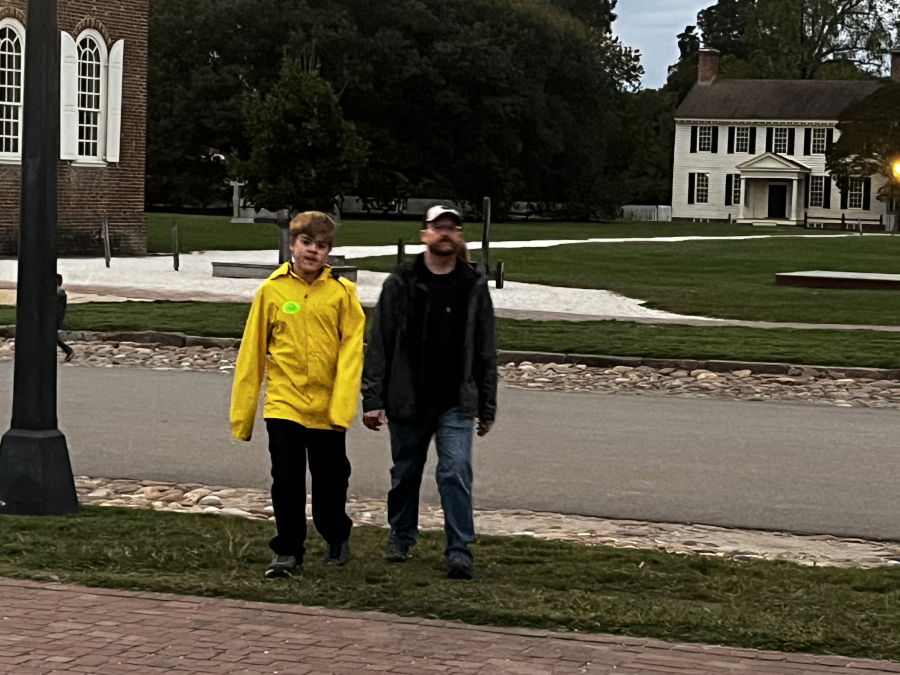
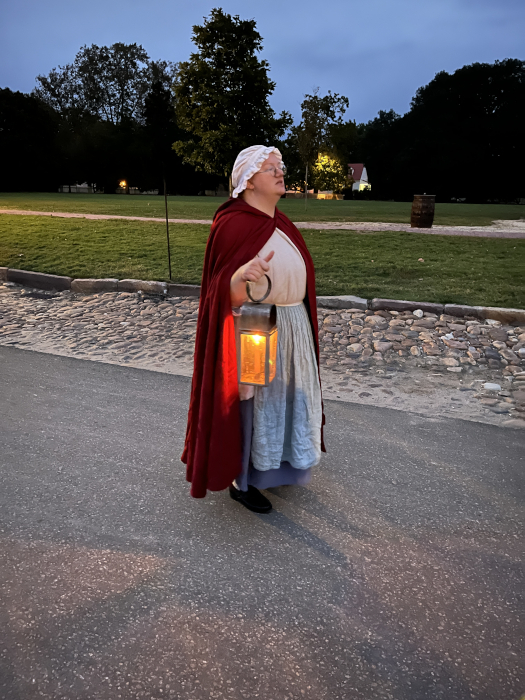
Our tour guide and storyteller.
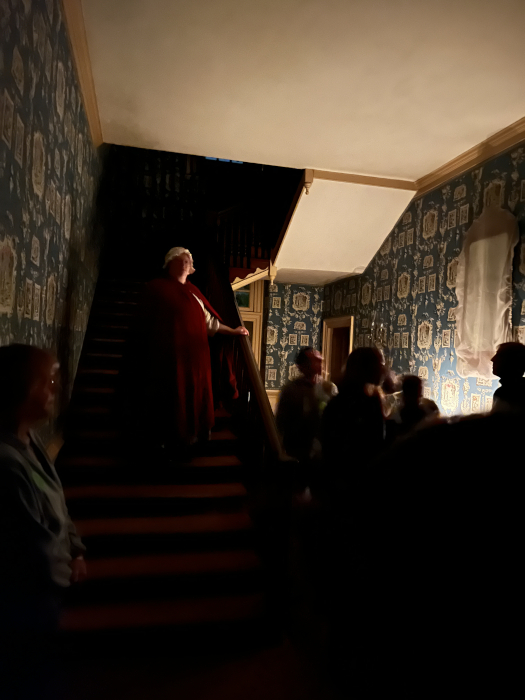
Telling ghost stories in a creepy old house with only a few candles burning. We went in a few different houses to hear stories.
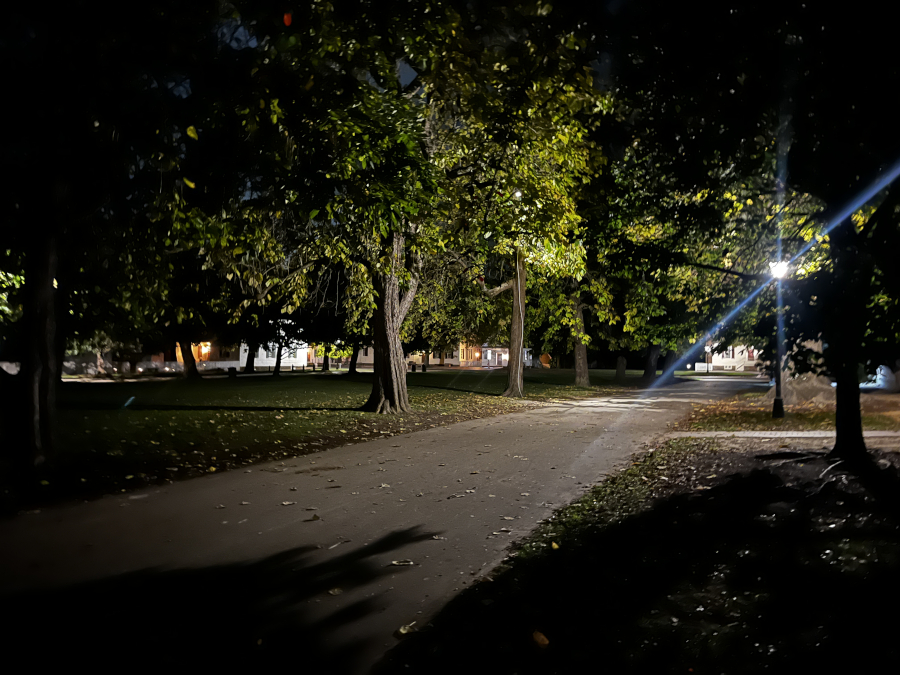
And we heard stories on the street.
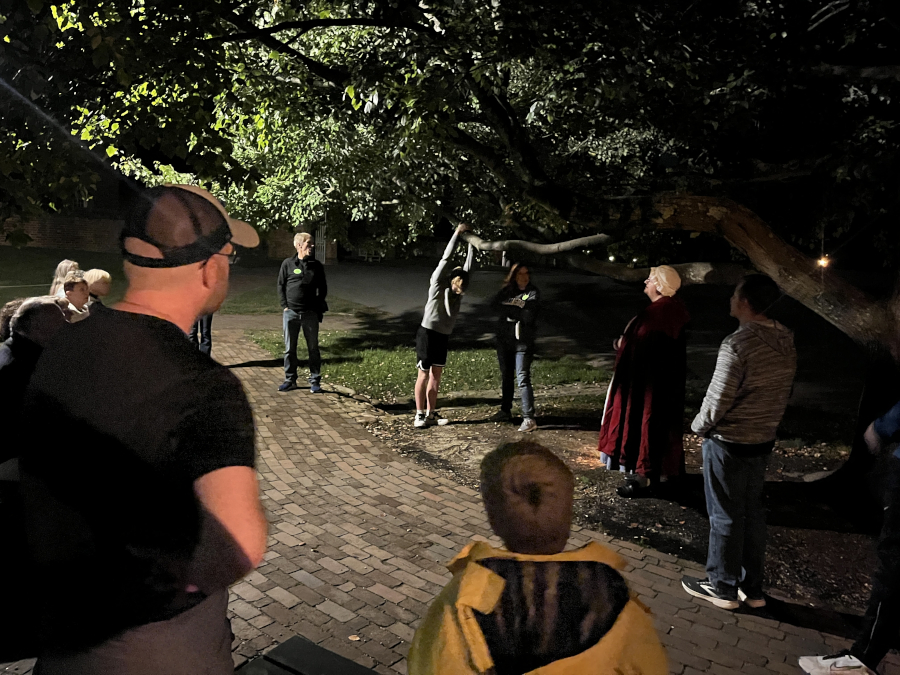

The haunted mansion.
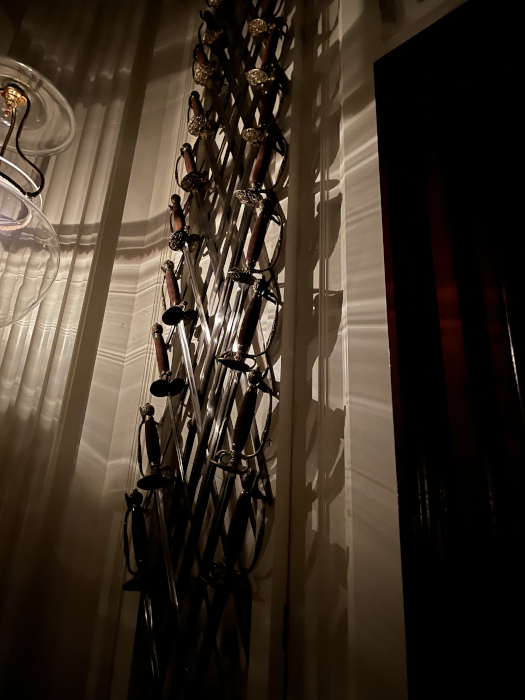
The walls were decorated with swords...
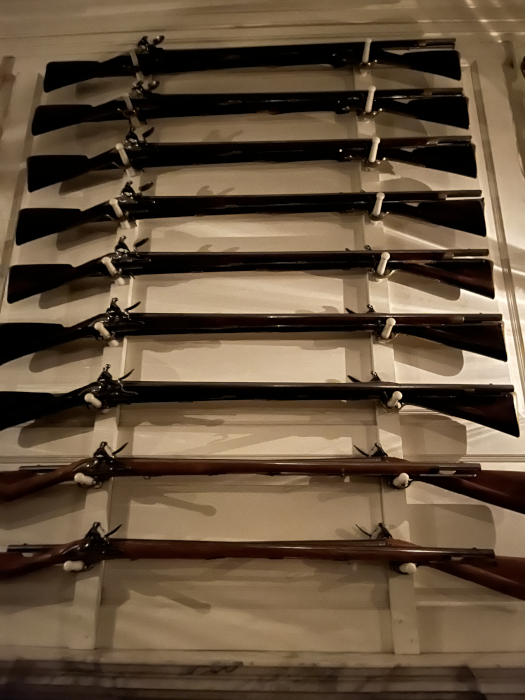
...and guns.
The last story was the best one, and then we walked back to the car and returned to the hotel. I got an ice cream sandwich for desert and we all went to bed not too long after. It was a big day.
Thanks for reading!